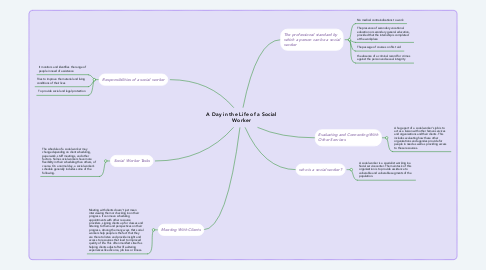A Day in the Life of a Social Worker
by Андрей Кузнецов

1. Social Worker Tasks
1.1. The schedule of a social worker may change depending on client scheduling, paperwork, staff meetings, and other factors. Some social workers have more flexibility in their scheduling than others, of course. On a normal day, a social worker’s schedule generally includes some of the following.
2. Responsibilities of a social worker
2.1. It monitors and identifies the range of people in need of assistance
2.2. Tries to improve the material and living conditions of their lives
2.3. To provide social and legal protection
3. Meeting With Clients
3.1. Meeting with clients doesn’t just mean interviewing them or checking in on their progress. It can mean scheduling appointments with other resource providers, signing clients up for classes and listening to them and perspectives on their progress. Among the many ways that social workers help people is the fact that they are there to listen and provide insight and access to resources that lead to improved quality of life. This often manifests itself as helping clients adjust after life-altering experiences like divorce, job loss or illness.
4. The professional standard by which a person can be a social worker
4.1. No medical contraindications to work
4.2. The presence of secondary vocational education or secondary general education, provided that the internship is completed at the workplace
4.3. The passage of courses on first aid
4.4. the absence of a criminal record for crimes against the person and sexual integrity
5. who is a social worker?
5.1. A social worker is a specialist working in a Social service center. The main task of this organization is to provide assistance to vulnerable and vulnerable segments of the population.
6. Evaluating and Connecting With Other Services
6.1. A huge part of a social worker’s job is to act as a liaison with other human services and organizations and their clients. This includes evaluating how these other organizations and agencies provide for people in need as well as providing access to these resources.


